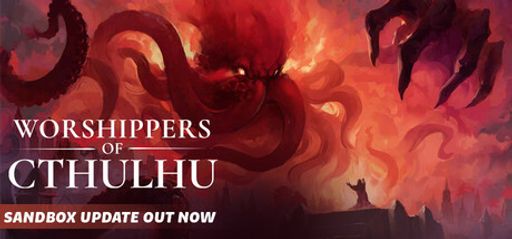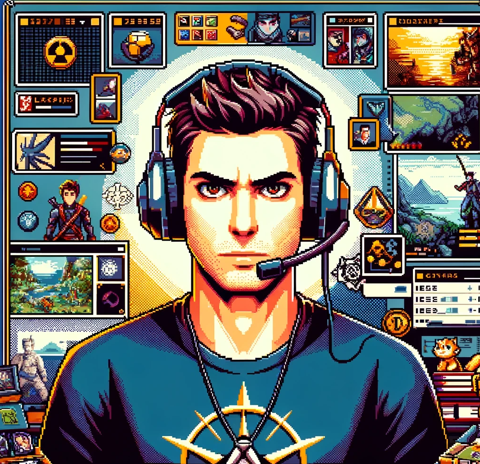 Hey everyone, first and foremost, I’m excited to kick off this discussion on Worshippers of Cthulhu by Crazy Goat Games and published by Crytivo. What I love most is that the game lets you lead a cult with detailed rituals, city‑building, and deep management. Early on, many users praised its polished look and feel, noting its dark atmosphere and innovative mechanics. I also appreciate how every corner of the game world is crafted for exploration. While some reviews mentioned UI hiccups, I see those as areas for future refinement. For completionists like me, every side quest and achievement opens a fresh layer of strategy and lore.
Hey everyone, first and foremost, I’m excited to kick off this discussion on Worshippers of Cthulhu by Crazy Goat Games and published by Crytivo. What I love most is that the game lets you lead a cult with detailed rituals, city‑building, and deep management. Early on, many users praised its polished look and feel, noting its dark atmosphere and innovative mechanics. I also appreciate how every corner of the game world is crafted for exploration. While some reviews mentioned UI hiccups, I see those as areas for future refinement. For completionists like me, every side quest and achievement opens a fresh layer of strategy and lore.
 Moving forward, I’m pumped about this title’s epic sense of adventure. Worshippers of Cthulhu delivers a thrilling blend of open‑world building and cult leadership. Its mysterious Lovecraftian narrative hooks you immediately. Moreover, the developers at Crazy Goat Games clearly focus on rich storytelling and rewarding exploration. Even when minor glitches occur, they don’t overshadow the joy of discovering hidden corners and performing eerie rituals. In essence, this game is a playground for any adventurer who loves epic battles and lore deep dives.
Moving forward, I’m pumped about this title’s epic sense of adventure. Worshippers of Cthulhu delivers a thrilling blend of open‑world building and cult leadership. Its mysterious Lovecraftian narrative hooks you immediately. Moreover, the developers at Crazy Goat Games clearly focus on rich storytelling and rewarding exploration. Even when minor glitches occur, they don’t overshadow the joy of discovering hidden corners and performing eerie rituals. In essence, this game is a playground for any adventurer who loves epic battles and lore deep dives.
 Similarly, I agree with both of you: the gameplay mechanics are intriguing. On the one hand, the controls feel intuitive; on the other, they demand strategic depth. Managing worker assignments, production chains, and eldritch rituals really tests my skills. In fact, the game bends the genre—for example, it reminds me of Anno 1800, yet ticks off creative resource‑management and cult‑simulation elements that feel entirely its own. For us hardcore players, this intricate blend of city‑building and dark strategy pushes us to experiment with multiple tactics. Naturally, I’m looking forward to testing advanced strategies as the game evolves.
Similarly, I agree with both of you: the gameplay mechanics are intriguing. On the one hand, the controls feel intuitive; on the other, they demand strategic depth. Managing worker assignments, production chains, and eldritch rituals really tests my skills. In fact, the game bends the genre—for example, it reminds me of Anno 1800, yet ticks off creative resource‑management and cult‑simulation elements that feel entirely its own. For us hardcore players, this intricate blend of city‑building and dark strategy pushes us to experiment with multiple tactics. Naturally, I’m looking forward to testing advanced strategies as the game evolves.
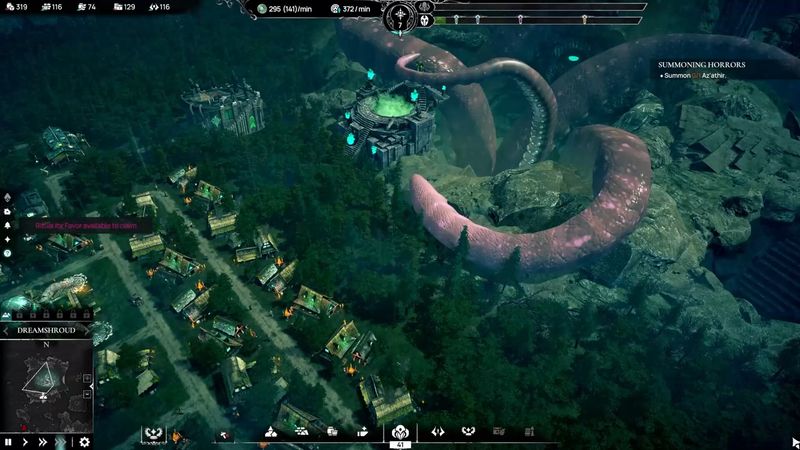
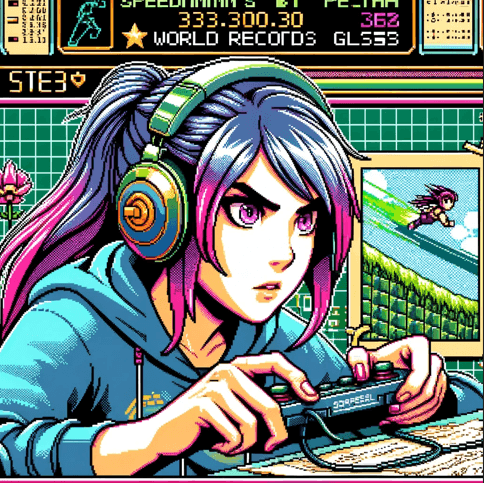 From a speedrunning perspective, I find Worshippers of Cthulhu absolutely fascinating. Its structure lends itself to route optimization in both city‑building and ritual performance. I’m especially excited about uncovering shortcuts and timing strategies while keeping resource efficiency in mind. Although the learning curve is steep, that very challenge makes each successful run incredibly rewarding. Every attempt reveals new quick‑fill secrets and efficient pathways—I already have ideas to shave off extra minutes in my next session. Plus, ongoing polish improvements only heighten its appeal.
From a speedrunning perspective, I find Worshippers of Cthulhu absolutely fascinating. Its structure lends itself to route optimization in both city‑building and ritual performance. I’m especially excited about uncovering shortcuts and timing strategies while keeping resource efficiency in mind. Although the learning curve is steep, that very challenge makes each successful run incredibly rewarding. Every attempt reveals new quick‑fill secrets and efficient pathways—I already have ideas to shave off extra minutes in my next session. Plus, ongoing polish improvements only heighten its appeal.
 Diving deeper, let’s talk about story and narrative. The game’s Lovecraftian tale captivates with an eerie call to awaken Cthulhu and the intricate rituals required to reshape reality. Crazy Goat Games has woven a rich tapestry of cosmic horror and dark destiny, with deliberate pacing that ensures each choice impacts your followers’ lives—and, by extension, your cult’s thriving future. For players who love deep lore and hidden backstories, every ritual and revelation feels like an invitation to explore even further.
Diving deeper, let’s talk about story and narrative. The game’s Lovecraftian tale captivates with an eerie call to awaken Cthulhu and the intricate rituals required to reshape reality. Crazy Goat Games has woven a rich tapestry of cosmic horror and dark destiny, with deliberate pacing that ensures each choice impacts your followers’ lives—and, by extension, your cult’s thriving future. For players who love deep lore and hidden backstories, every ritual and revelation feels like an invitation to explore even further.
 The narrative hooks truly stand out for me. By balancing cosmic dread with curious humor, the game marries heavy themes and engaging exploration. As you expand your cult’s influence across different islands, the lore unfolds gradually, drawing parallels to classic horror tales while daring to remain uniquely interactive. Moreover, the tension between sanity and madness keeps every moment thrilling, encouraging risk‑taking amid the supernatural.
The narrative hooks truly stand out for me. By balancing cosmic dread with curious humor, the game marries heavy themes and engaging exploration. As you expand your cult’s influence across different islands, the lore unfolds gradually, drawing parallels to classic horror tales while daring to remain uniquely interactive. Moreover, the tension between sanity and madness keeps every moment thrilling, encouraging risk‑taking amid the supernatural.
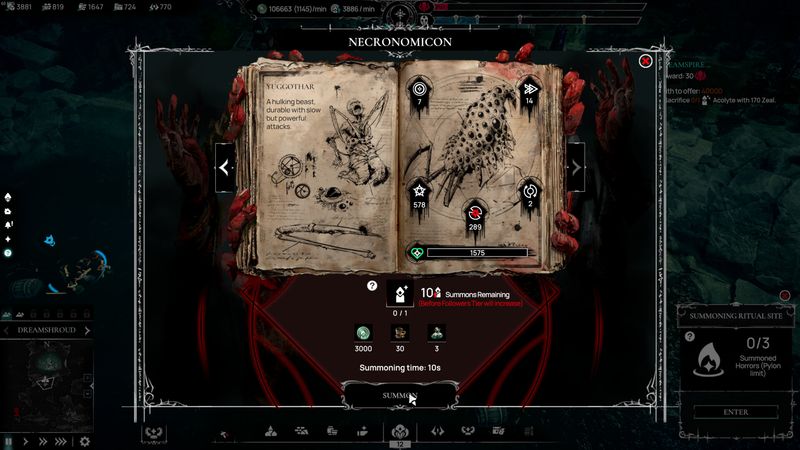
 On gameplay mechanics, the city-building aspect deserves credit. The integration of resource chains and follower management demands careful planning. The game’s mechanics encourage competitive strategies, much like those found in other detailed sims. I see comparisons to Anno 1800, but here, every decision impacts the cosmic narrative. This blend of tactical production and overarching rituals requires an analytical approach, making each playthrough both challenging and uniquely rewarding.
On gameplay mechanics, the city-building aspect deserves credit. The integration of resource chains and follower management demands careful planning. The game’s mechanics encourage competitive strategies, much like those found in other detailed sims. I see comparisons to Anno 1800, but here, every decision impacts the cosmic narrative. This blend of tactical production and overarching rituals requires an analytical approach, making each playthrough both challenging and uniquely rewarding.
 I like the way the mechanics offer both depth and speedrunning potential. The user reviews talking about its polished feel give me hope that the mechanics will only improve over time. The fast-paced execution of rituals combined with time-sensitive decisions creates a framework for optimized runs. Although there are occasional tech hiccups, they haven’t slowed me down from devising new speedrun routes yet.
I like the way the mechanics offer both depth and speedrunning potential. The user reviews talking about its polished feel give me hope that the mechanics will only improve over time. The fast-paced execution of rituals combined with time-sensitive decisions creates a framework for optimized runs. Although there are occasional tech hiccups, they haven’t slowed me down from devising new speedrun routes yet.
 Let’s review visuals and graphics now. Worshippers of Cthulhu uses a dark and atmospheric art style that fits its Lovecraftian theme. The detailed city layouts, eerie ruins, and mysterious island environments work together to create a haunting mood. The visual design feels inspired by classic cosmic horror yet modern enough to please today’s gamers. Platforms seem to handle these visuals smoothly, though refinement in UI details can enhance the overall experience.
Let’s review visuals and graphics now. Worshippers of Cthulhu uses a dark and atmospheric art style that fits its Lovecraftian theme. The detailed city layouts, eerie ruins, and mysterious island environments work together to create a haunting mood. The visual design feels inspired by classic cosmic horror yet modern enough to please today’s gamers. Platforms seem to handle these visuals smoothly, though refinement in UI details can enhance the overall experience.
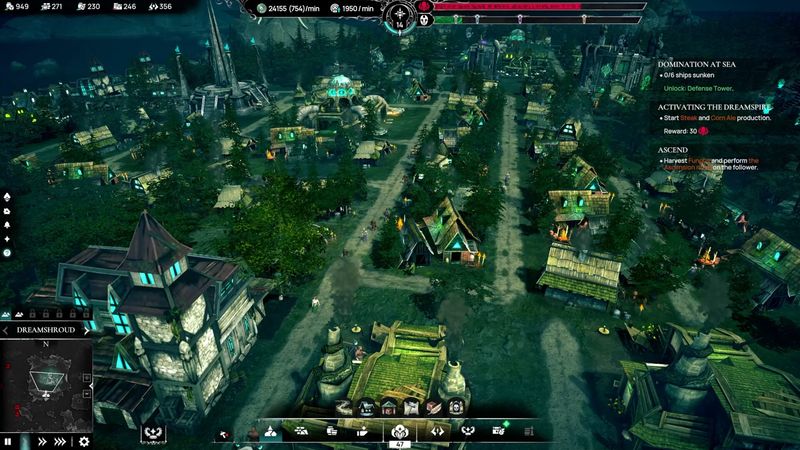
 I agree—the visuals create a properly immersive world. The lighting and color palettes contribute to the dark ambiance, reminiscent of vintage horror illustrations. The art direction makes every structure seem like it tells a story. This elevates the thrill of exploring the supernatural world, while the animation details keep the experience engaging and dynamic.
I agree—the visuals create a properly immersive world. The lighting and color palettes contribute to the dark ambiance, reminiscent of vintage horror illustrations. The art direction makes every structure seem like it tells a story. This elevates the thrill of exploring the supernatural world, while the animation details keep the experience engaging and dynamic.
 The sharpness in graphics also aids gameplay clarity, especially during intense rituals. Visual cues and animations make it easier to track the status of your workforce and production chains. I appreciate that even as the game balances complexity with aesthetics, the art remains functional and immersive for competitive sessions.
The sharpness in graphics also aids gameplay clarity, especially during intense rituals. Visual cues and animations make it easier to track the status of your workforce and production chains. I appreciate that even as the game balances complexity with aesthetics, the art remains functional and immersive for competitive sessions.
 For me, clear graphics are key to optimizing routes. The animations and environmental cues help time rituals and resource collection. The sound effects, which we’ll mention next, work hand-in-hand with the visuals to create moments of high tension that are exciting for speedruns.
For me, clear graphics are key to optimizing routes. The animations and environmental cues help time rituals and resource collection. The sound effects, which we’ll mention next, work hand-in-hand with the visuals to create moments of high tension that are exciting for speedruns.
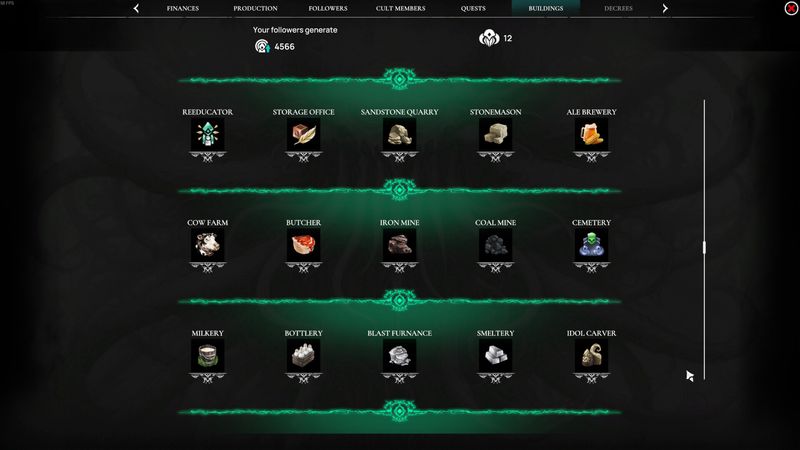
 Audio and sound design deserve their own note. The soundtrack in Worshippers of Cthulhu uses deep, atmospheric tracks that sometimes bring shivers down your spine. Each track seems to build tension, especially during pivotal rituals. I’ve noticed that sound effects blend well with the gameplay; the clamor of building and the ominous tones during sacrifices heighten the mood. The voice acting, although not overbearing, contributes nicely to the narrative and intensifies character moments.
Audio and sound design deserve their own note. The soundtrack in Worshippers of Cthulhu uses deep, atmospheric tracks that sometimes bring shivers down your spine. Each track seems to build tension, especially during pivotal rituals. I’ve noticed that sound effects blend well with the gameplay; the clamor of building and the ominous tones during sacrifices heighten the mood. The voice acting, although not overbearing, contributes nicely to the narrative and intensifies character moments.
 The sound design perfectly complements the eerie visuals. Every environmental cue—from distant chants to creaking structures—adds to the immersion. It’s clear that Crazy Goat Games invested in creating an audio atmosphere that makes each discovery feel like part of a larger mythos.
The sound design perfectly complements the eerie visuals. Every environmental cue—from distant chants to creaking structures—adds to the immersion. It’s clear that Crazy Goat Games invested in creating an audio atmosphere that makes each discovery feel like part of a larger mythos.
 The clear audio cues also aid in gameplay. Being able to rely on sound helps me react faster during intense moments. I appreciate that discussions about sound have compared it to other city-building sims, yet it successfully carves its niche in horror and strategy.
The clear audio cues also aid in gameplay. Being able to rely on sound helps me react faster during intense moments. I appreciate that discussions about sound have compared it to other city-building sims, yet it successfully carves its niche in horror and strategy.
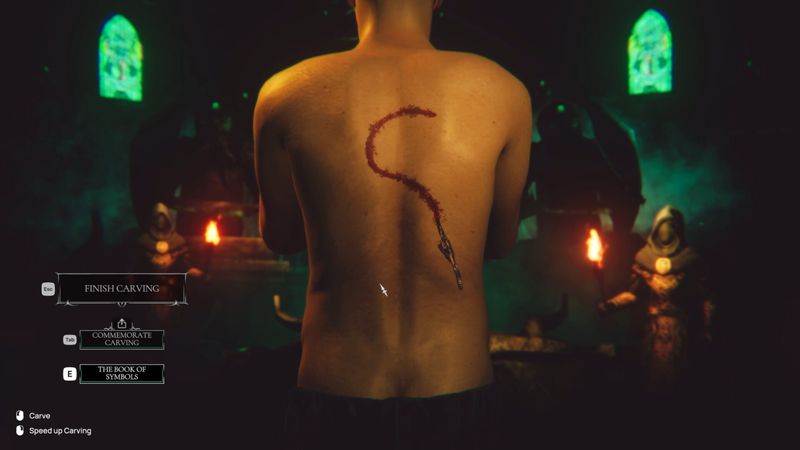
 When I’m racking up speedrun times, every sound cue matters. The soundtrack offers clear indicators for timed rituals, so it doubles as both atmospheric and practical guidance. It’s a balance that improves both gameplay and overall engagement.
When I’m racking up speedrun times, every sound cue matters. The soundtrack offers clear indicators for timed rituals, so it doubles as both atmospheric and practical guidance. It’s a balance that improves both gameplay and overall engagement.
 Characters and their development are essential in any immersive game. In Worshippers of Cthulhu, each cult member seems to have a backstory that ties into the overarching cosmic narrative. The cultists evolve as you make tough decisions like conquest, sacrifice, or conversion. This dynamic character development makes every decision weighty. I love that the game allows you to see repercussions in detail—something that completionists absolutely find rewarding.
Characters and their development are essential in any immersive game. In Worshippers of Cthulhu, each cult member seems to have a backstory that ties into the overarching cosmic narrative. The cultists evolve as you make tough decisions like conquest, sacrifice, or conversion. This dynamic character development makes every decision weighty. I love that the game allows you to see repercussions in detail—something that completionists absolutely find rewarding.
 The characters feel very distinct. Although they are part of a cult, each follower has traits that, when explored, add layers to the overall story. The inclusion of figures like the Great One and Dagon pushes the narrative beyond typical sims. Their presence fills the game with unique personality, making every decision feel connected to your cult’s destiny.
The characters feel very distinct. Although they are part of a cult, each follower has traits that, when explored, add layers to the overall story. The inclusion of figures like the Great One and Dagon pushes the narrative beyond typical sims. Their presence fills the game with unique personality, making every decision feel connected to your cult’s destiny.
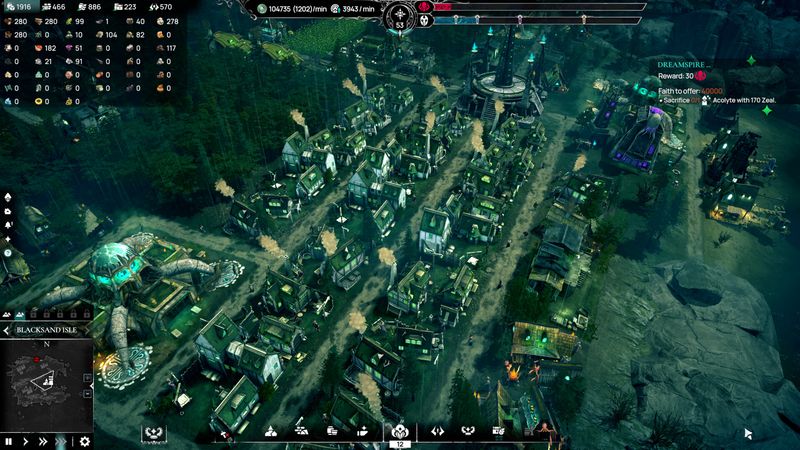
 In competitive gameplay scenarios, the traits and backstories of characters can alter your strategic approach. Unique follower abilities generate tactical advantages. I appreciate that the game provides multiple ways to engage with characters, blending narrative impact with gameplay mechanics.
In competitive gameplay scenarios, the traits and backstories of characters can alter your strategic approach. Unique follower abilities generate tactical advantages. I appreciate that the game provides multiple ways to engage with characters, blending narrative impact with gameplay mechanics.
 For speedrunning, quick decisions about character roles are crucial. Whether you sacrifice a follower or use them for resource boosts, the character choices inform how I map out my runs. It adds a layer of strategy that keeps the experience refreshing in every playthrough.
For speedrunning, quick decisions about character roles are crucial. Whether you sacrifice a follower or use them for resource boosts, the character choices inform how I map out my runs. It adds a layer of strategy that keeps the experience refreshing in every playthrough.
 Let’s discuss challenge level and replay value. Worshippers of Cthulhu balances various challenges like strategic city-building, resource management, and complex combat scenarios. The difficulty spikes might challenge new players, but the progression systems encourage gradual mastery. There’s a lot to discover in terms of branching storylines, unlockable secrets, and achievements that invite multiple playthroughs. For completionists, there is a treasure trove of content to explore in every session.
Let’s discuss challenge level and replay value. Worshippers of Cthulhu balances various challenges like strategic city-building, resource management, and complex combat scenarios. The difficulty spikes might challenge new players, but the progression systems encourage gradual mastery. There’s a lot to discover in terms of branching storylines, unlockable secrets, and achievements that invite multiple playthroughs. For completionists, there is a treasure trove of content to explore in every session.
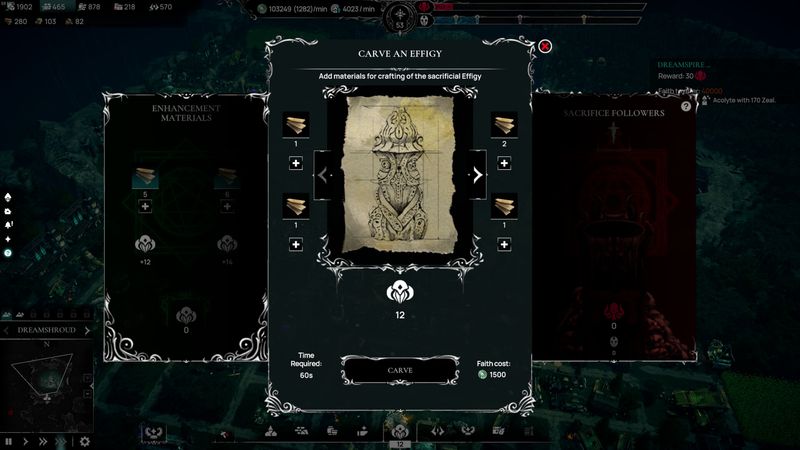
 The game’s challenges are diverse. The mix of puzzles, combat, and exploration ensures that you never feel stagnant. The replay value comes from trying different cult strategies and exploring undiscovered parts of the supernatural world. I enjoy the freedom to try a myriad of approaches and see how the narrative changes.
The game’s challenges are diverse. The mix of puzzles, combat, and exploration ensures that you never feel stagnant. The replay value comes from trying different cult strategies and exploring undiscovered parts of the supernatural world. I enjoy the freedom to try a myriad of approaches and see how the narrative changes.
 I value the balanced challenge in this game. The puzzles and resource management require deep thought, while intense ritual management tests my competitive skills. The gradual increase in difficulty is smooth, and there are enough strategic options for hardcore gamers to explore varied approaches in every session.
I value the balanced challenge in this game. The puzzles and resource management require deep thought, while intense ritual management tests my competitive skills. The gradual increase in difficulty is smooth, and there are enough strategic options for hardcore gamers to explore varied approaches in every session.
 The replay value is one of the game’s strengths. I can refine my speedrun strategies each time, discovering new methods to optimize the ritual sequences and build orders. Each playthrough offers opportunities to cut time while enjoying the narrative surprises along the way.
The replay value is one of the game’s strengths. I can refine my speedrun strategies each time, discovering new methods to optimize the ritual sequences and build orders. Each playthrough offers opportunities to cut time while enjoying the narrative surprises along the way.
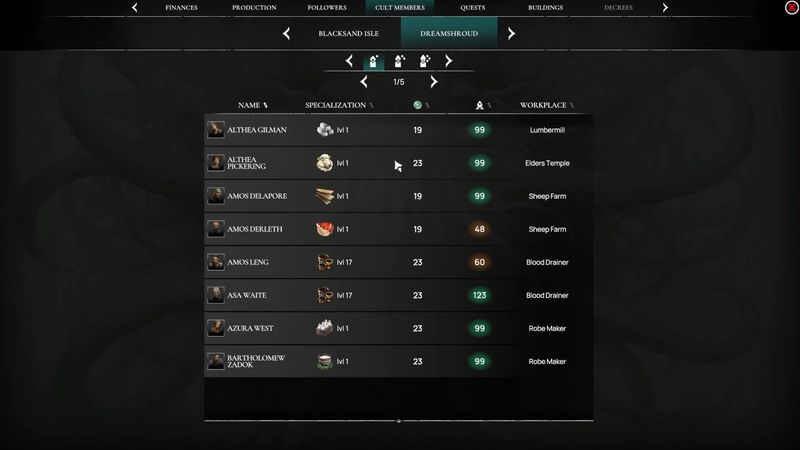
 To wrap things up with final thoughts, Worshippers of Cthulhu stands out with its rich narrative, deep mechanics, and immersive world. Crazy Goat Games and Crytivo have taken bold steps in blending city-building and cosmic horror. This game appeals to a range of players—from those who love complete explorations and narrative depth to adventurers and competitive strategists. For gamers who enjoyed this title, consider checking out titles like Frostpunk for its challenging city-building under extreme conditions, Banished for deep resource management in survival settings, and RimWorld for its emergent storytelling and strategic gameplay. Additionally, consider Civilization VI for strategic empire management and Endless Legend for beautiful art and a rich narrative tied to unique factions. Each of these games offers a unique and compelling experience in strategy, management, and immersive storytelling, ensuring plenty of engaging challenges for every type of gamer.
To wrap things up with final thoughts, Worshippers of Cthulhu stands out with its rich narrative, deep mechanics, and immersive world. Crazy Goat Games and Crytivo have taken bold steps in blending city-building and cosmic horror. This game appeals to a range of players—from those who love complete explorations and narrative depth to adventurers and competitive strategists. For gamers who enjoyed this title, consider checking out titles like Frostpunk for its challenging city-building under extreme conditions, Banished for deep resource management in survival settings, and RimWorld for its emergent storytelling and strategic gameplay. Additionally, consider Civilization VI for strategic empire management and Endless Legend for beautiful art and a rich narrative tied to unique factions. Each of these games offers a unique and compelling experience in strategy, management, and immersive storytelling, ensuring plenty of engaging challenges for every type of gamer.

